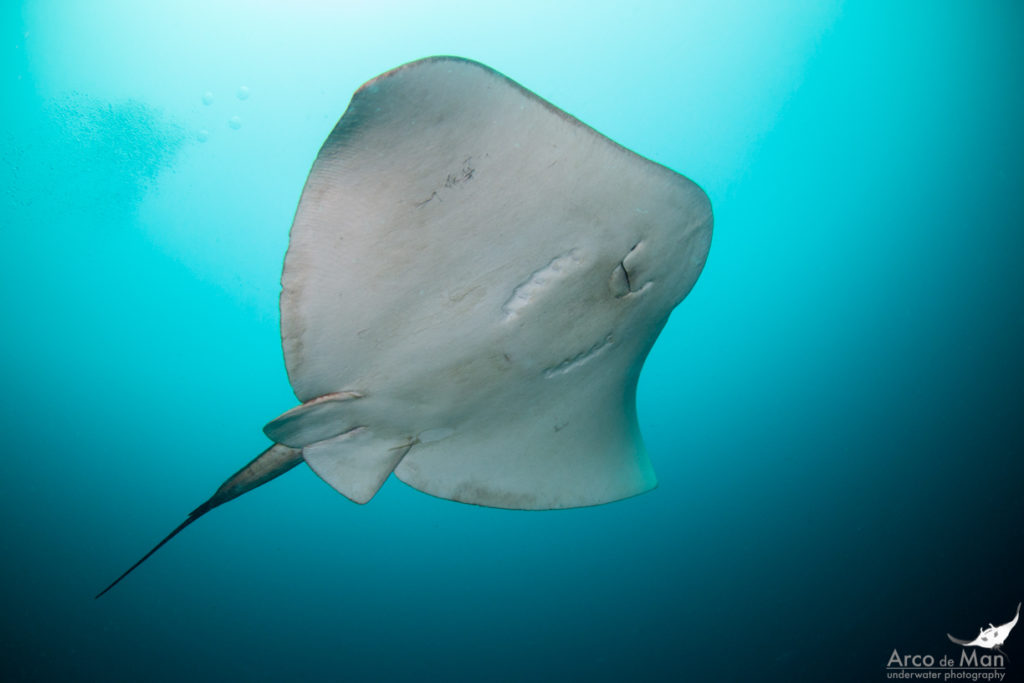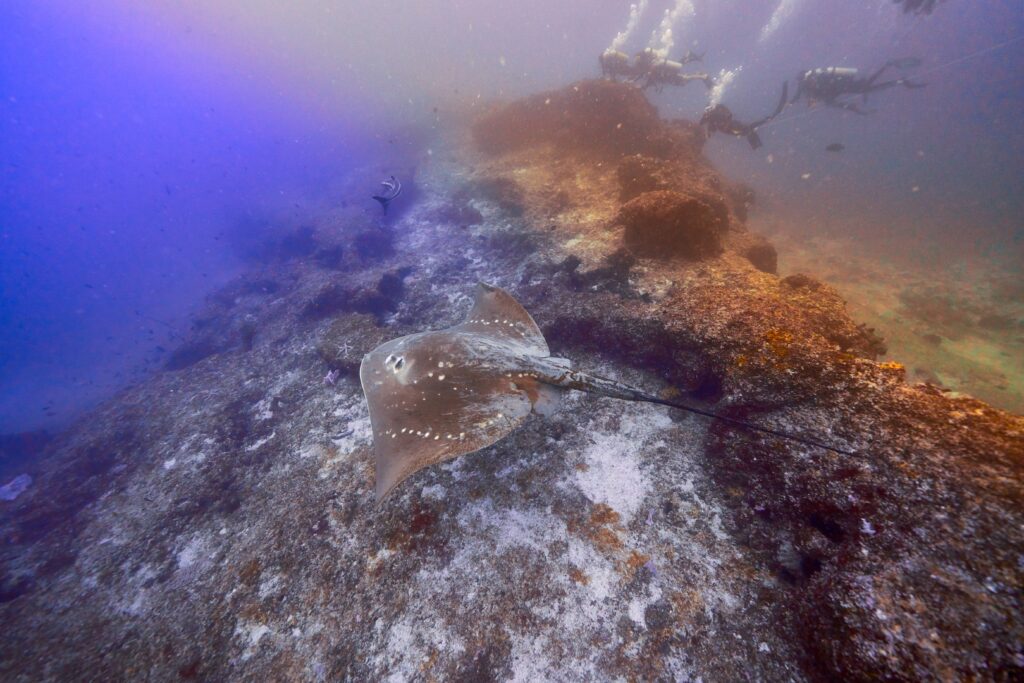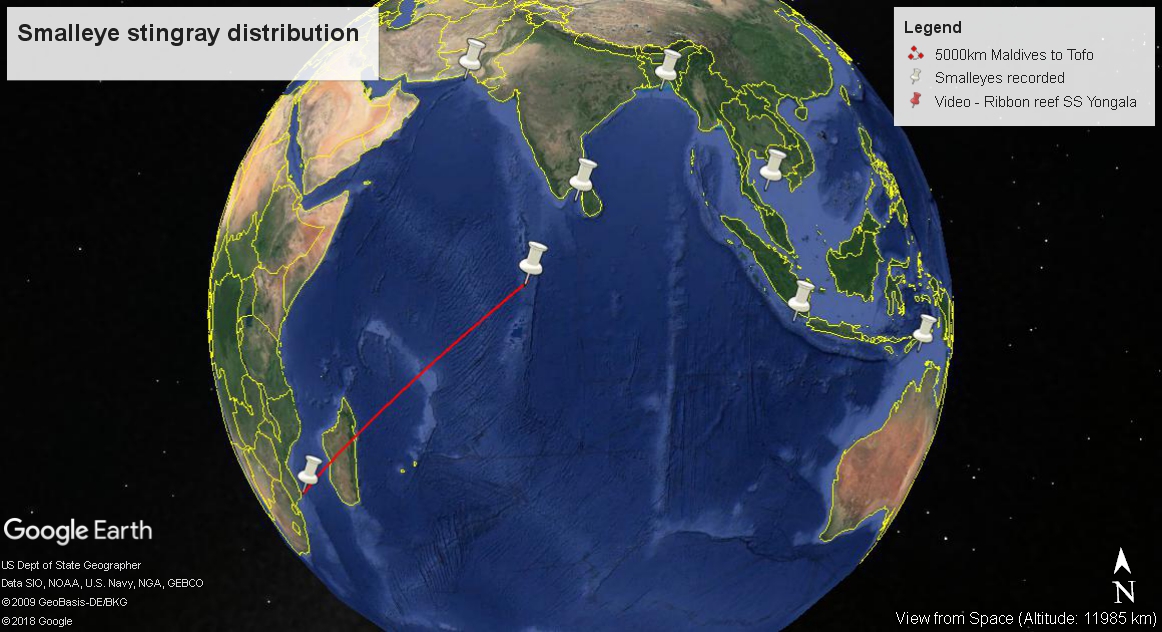Where is it?
In 2008 this huge, elusive and charismatic ray was officially documented to inhabit the Mozambican coastline. This extended the known range of this species by over 5,000 km, now documented to patchily range all around the edge of the Indian Ocean, from Mozambique all the way to Australia… even the in the mouth of the river Ganges.
Learn More

What is it?
Stingrays (in their current form) have been flapping around in the oceans for 150 million years. They are a close cousin to sharks, as they also have a cartilaginous skeleton.
The smalleye stingray is thought to be the largest stingray and unique in its swimming method – it’s a flapper, not a waver, unlike all other known stingrays. It is also observed to hover over aggregations of cleaner fish, like a manta ray, and spend a lot of time in midwater, again, unlike the majority of other stingrays.
Learn More

How do we study it?
Research conducted from Mozambique will be slowly unravelling this question. So little is known about the ray that it is impossible the assess it’s vulnerability status – it is data deficient according to the IUCN species redlist. Past, ongoing and future projects will be detailed in the projects section. If you’re daring enough and would like the chance to come and see these rays, along with all the other amazing marine life Mozambique has to offer, please hit the contacts.
What you can do…

-
report your encounter
It’s fast and simple. Just head to the encounter page
-
submit an ID photo
Check out the photo-ID page and submit your own ID shot!
-
become a sponsor
Check out others that have helped in the smalleye stingray plea on the sponsors page

